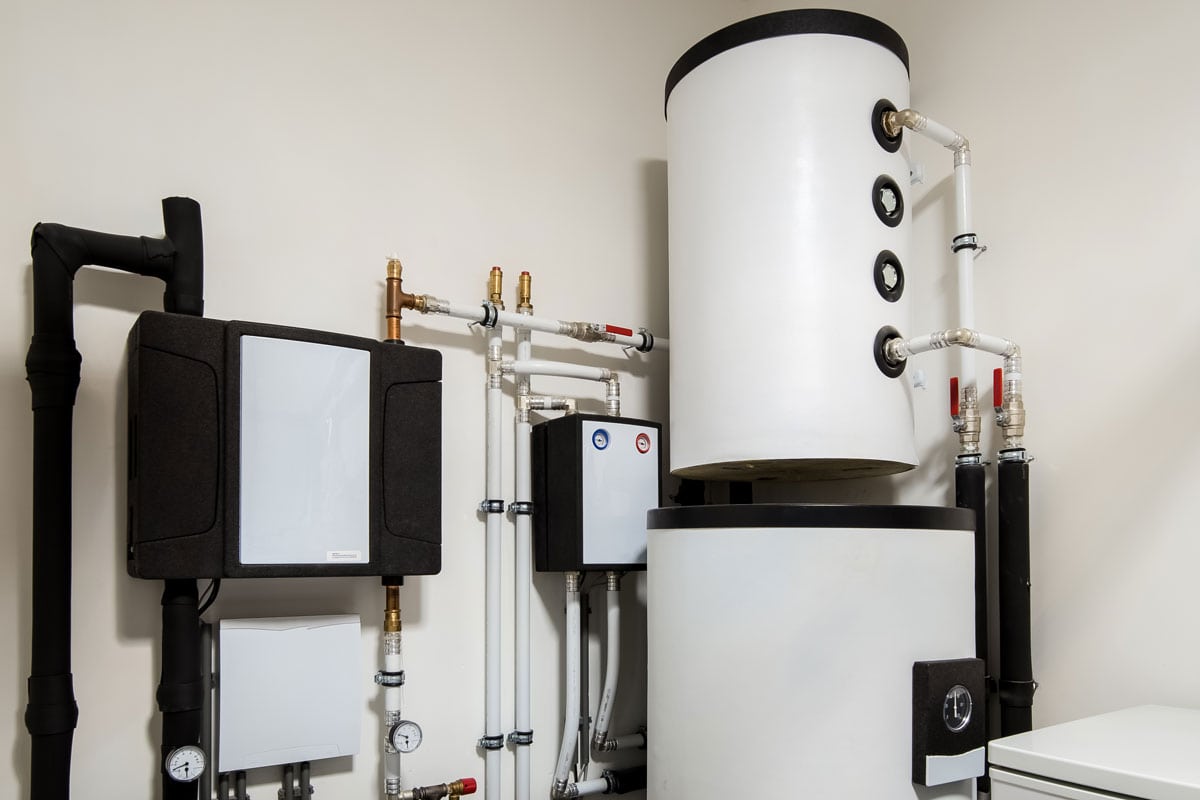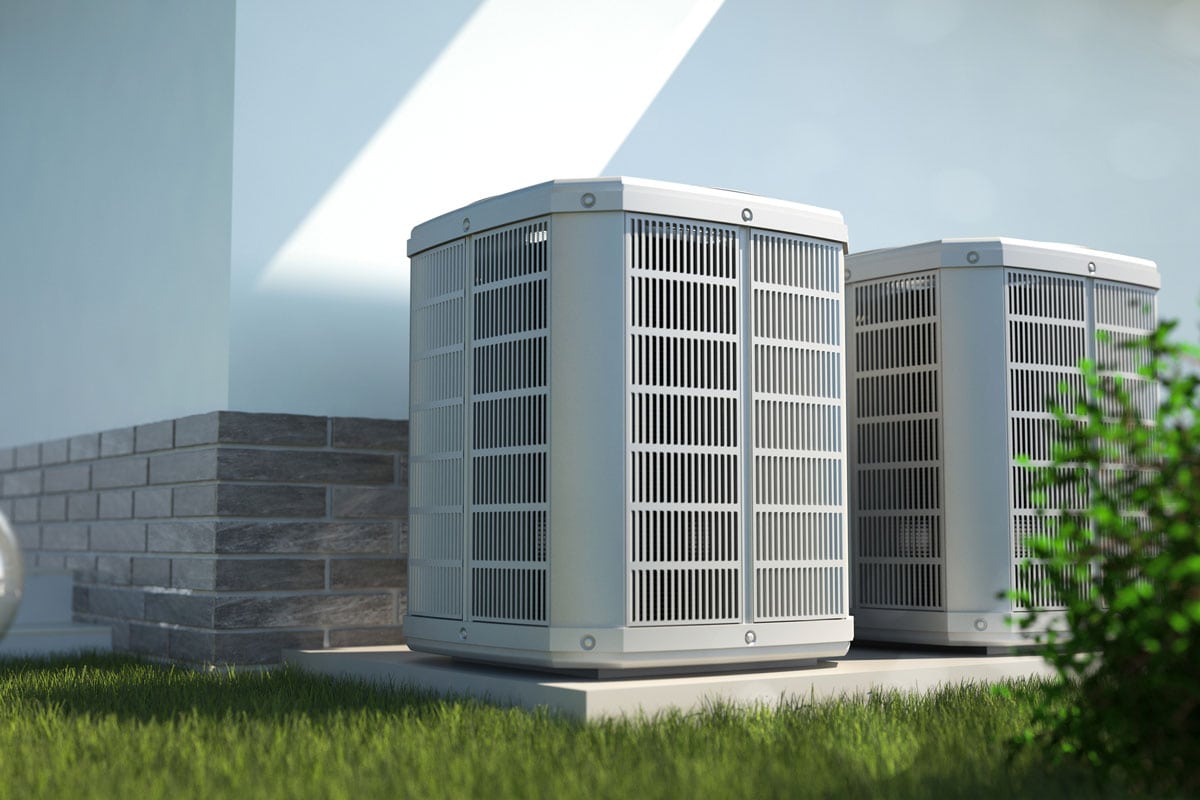The importance of breakers in electrical systems cannot be overemphasized. However, knowing the right size for an 8 kW heat strip can be a bit tricky. We have researched this question for you, and here is what we found.
Generally, the 8KW heat strip takes a 220 volt and 40 amp breaker. The size of the breaker depends on the amperage. The breaker rating should not exceed the maximum amperage of cable and wire. Voltage is usually needed to find the amperage of a heat strip.
In this article, we'll take at what heat strips are and how they work as well as how to use the correct breaker for them. We'll see how to calculate a heat strip's power in BTUs and how to choose the right size of heat strip for your needs. Read on to learn more about it!

What Is A Heat Strip?
Heat strips are electrical heating elements comparable to the heating element in an electric oven that assist a heat pump in producing heat even when the outside temperature drops below freezing.
Generally, heat strips are not controlled manually. Heat strips are only found in heat pumps. Gas heaters with air conditioning rely solely on a flammable fuel source (natural gas or propane) for heat and do not require auxiliary heating.

What Size Breaker For 8KW Heat Strip?
The circuit breaker is useful in homes since it protects various appliances from damage. When a building's electrical wiring has too much electricity running through it, the breaker flips, preventing excess energy from reaching appliances.
The 8KW heat strip usually uses a 220 volt and 40 amp breaker. Three significant factors come into play when determining the size of the breaker to use for an 8kW heat strip, namely: Voltage, current, and resistance.
The pressure that causes an electric charge to move is known as voltage. The charge's flow, which is the speed at which the charge passes through the conductor at any given point — is measured as current. At the same time, the conductor provides some opposition to this movement, which varies according to the composition and size of the conductor.
Voltage, current, and resistance are interconnected. Voltage divided by resistance equals current (usually written as I = v /r). This makes sense, since if greater pressure is applied to an electric charge or a barrier is lowered, more charge flows in turn. A smaller charge will flow the pressure is lowered or the resistance is boosted.
When the current increases above a safe level, the circuit breaker cuts the circuit off. However, the size of the breaker plays a vital role in determining whether or not the breaker would cut off supply under a specific current increase, and a simple miscalculation could result in permanent damage to your heat strip.
As highlighted earlier, the amps determine the size of the breaker to be used for a heat strip. Hence by knowing the amps, you can quickly determine what breaker size would be most suitable. Amps equal watts divided by the volts (I = W/E).

Working Mechanism of Circuit Breaker
The circuit operation is normal when the circuit current rating is below the breaker rating and can be modified manually. When the current value surpasses the breaker current in the event of a fault or short circuit, the breaker will automatically trip and the circuit will be disconnected from the supply line.
For instance, a 33 amp circuit breaker may trip at 33 amps irrespective of whether the load is continuous or intermittent. As a result, the circuit breaker current must be 20-25 percent more than the current flowing to the linked item in the wires and cables.
Hence, if you use a 100 amp circuit breaker for a 33 amp circuit, the circuit will be exposed to powerful currents which could cause damage to the device. This happens because a current greater than the 33 amp will not trip the circuit breaker.
The breaker size should generally be 125 percent of the cable's ampacity or the circuit that the CB is protecting.
How Many BTUs Is A 8KW Heat Strip?
British Thermal Units (BTU) is a unit of measurement for thermal energy. It was first employed in the late 1800s and has become one of the most widely used classification units in heating and cooling equipment. The energy needed to make one pound of water cold or hot by one degree Fahrenheit at sea level is one BTU.
Therefore, an 8kW heat strip equals about 26,000 BTUs.
How Do I Know What Size Heat Strips I Need?

The only way to ensure your BTU estimate is accurate is to verify real-life, field circumstances. This requires taking actual amp and voltage readings at the heating element. Then use the kilowatts formula to calculate the actual kW.
Here is an actual formula: Heat Strip Kw = Volts x Amps / 1000. Apply the formula after measuring the actual voltage and amp at the heat strips.
To determine real heat strip BTU, multiply the recorded Kw by 3413. Then compare the real Kw BTU to the existing standard supplied BTU to determine field efficiency,
How Much Power Does A Heat Strip Use?
Heat strips use a lot of energy to operate. As a result, using heat strips for an extended period can raise your electricity bill.
Every hour, heat strips in an electric furnace with 5-kilowatt electric resistance utilizes up to 65 cents of electricity. It can be more than this during a cold snap. The system runs more when the temperature on the unit is high.
Which Is Better, Heat Pump Or Heat Strips?
Heat strips produce heat when electricity passes through them. When the air from a system fan passes over them, the heat is distributed all over your home.
Heat strips are not as energy efficient as a heat pump. Due to this, extra or emergency heat strips are built into these systems.
If the outside temperature drops very low there won't be enough heat in the air for your heat pump to function as it should. When this happens, the system activates the heat strips, which provide any needed extra heat so the pump can keep up.
How Long Do Heat Strips Last?
The auxiliary mode in a heat pump turns on the heat strip. Auxiliary heat is a built-in feature and you shouldn't confuse this with an alarm heat, an adjustable setting on your thermostat.
The outdoor unit is shut when the emergency heat is on, and the heat strips are the only heat source. This will use a disproportionate amount of electricity and should only be used when it is only the source of heat.
Most thermostats are programmed to automatically switch on the electric heat strip if the system runs, exceeding a specific time usually 15 minutes without increasing the temperature and over half a degree. Heat strips usually turn on because of this.

How Does Heat Pump Use Heat Strips?
The heat pump uses the heat strip and to better understand why both work together, you have to know the working principles of the pump. Heat pumps work by controlling warm air outside. When the outside air moves into the pump, refrigerant takes out heat from the air and changes it to hot vapor. Then, the heat circulates all over space.
Since the heat pump collects heat from the outside air, whenever the air is cold (below 4o degrees) it becomes very difficult for the heat pump to maintain its working order.
Additionally, almost all heat pumps utilize strips of heat coils as a supplementary source of heat when the system cannot change the outside air as it should. Electricity helps in heating the strips which heat the air flowing around them.
Are Heat Strips Safe?
Electric heat strips are safe. Like other systems that use electricity to produce heat, electric heat strips must meet safety and performance requirements before they become available on the market.
Also, the HVAC industry has learned that customers don't want devices that have even a remote risk of causing fires in their homes. Most HVAC manufacturers want customers to buy their products so they produce heat kits that are safe.
To Wrap Up

The size of the breaker greatly depends on the amperage. To determine the size of the breaker to use for an 8kW heat strip, factors like the voltage, current, and resistance should be considered. Also, note that the breaker size is not supposed to increase the highest amperage rating of cable and wire.
If you enjoyed reading this post, here are similar articles you may like:
